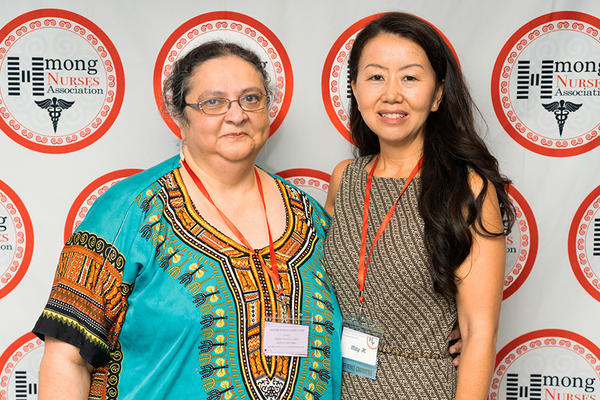Leading community-based, clinical research
October 24, 2022
One of the goals of the Center for Aging Science and Care Innovation (CASCI) is to lead community-based and clinical research that will benefit diverse aging adults and their caregivers' health, independence, and wellbeing. This column is dedicated to briefly highlighting some of our members’ recent research publications with a focus on how they contribute to our research goal, accompanied with information about how to access and read their research.
Nurse scientists, also CASCI members, have recently published results from observational and experimental research projects they led that are community or clinically based. Although their individual projects address distinct phenomena, problems, and possible solutions, some unifying themes exist. For example, all their work aims to improve the health, function, and wellbeing of older people living with chronic conditions and symptoms, such as peripheral artery disease and post-stoke symptoms (e.g., pain, spasticity, fatigue); or chronic risk factors such as those associated with cardiovascular disease and injurious falls. Their research questions are motivated by the state of the practice and science related to their phenomena, problems and solutions of interest. Their answers provide valuable new information to nurses in practice and research.
Following are key takeaways from their research:
• Try using a symptom-cluster lens when assessing people who are recovering from a stroke 1
– Nurses in practice and research should consider assessing the post-stroke symptoms of pain, spasticity, and fatigue together, as a cluster, rather than as individual symptoms with different causes and treatments.
• African American men help peers to reduce cardiovascular risks using evidence-based strategies in a community-based, small group intervention 2
– Future research can determine this intervention’s effectiveness and strategies for its implementation and dissemination.
• Deeper engagement (e.g., partnerships) is needed with older people who have fall risk factors to help them create and implement person-centered fall prevention plans 3
– Interdisciplinary team scientists need to identify the types and dosages of engagement and health behavior change strategies to help nurses develop strong partnerships with older people with fall risk factors.
• Total body recumbent stepping is a promising alternative to treadmill walking for improving the function, symptoms, and quality of life among people with peripheral artery disease 4
– Future research can confirm the findings of this pilot study and determine strategies for implementing into practice.
• Older people with cardiovascular risk factors should be encouraged to take breaks from sedentary behavior, but more evidence is needed to understand specific benefits 5
– Nurse scientists need to investigate the short-term and long-term effects of breaks in sedentary behavior among older people with cardiovascular risks, such as Type 2 diabetes. This evidence will help practicing nurses and older people understand the types of breaks most helpful and their specific effects on vascular health.
These takeaways represent only a small aspect of each project. References are below to learn more. Each publication details the premise of the research aims and questions, methods used, results with tables and figures, rich discussions about results compared to prior research, what results might mean, and more implications for practice and research.
1. Bhimani, R., Chappuis, D., Mathiason, M. A., & Anderson, L. C. (2022). Spasticity, Pain, and Fatigue: Are They Associated With Functional Outcomes in People With Stroke? Rehabilitation Nursing Journal, 47(2), 60-71
2. Lee, S., Hadidi, N. N., Lindgren, B. R., Kelley, R., & Lindquist, R. (2022). Peer Group Support Intervention to Reduce Cardiovascular Disease Risk for African American Men According to Life's Simple 7 in Faith-Based Communities. Research and Theory for Nursing Practice.
3. McMahon, S. K., Greene, E. J., Latham, N., Peduzzi, P., Gill, T. M., Bhasin, S., & Reuben, D. B. (2022). Engagement of older adults in STRIDE's multifactorial fall injury prevention intervention. Journal of the American Geriatrics Society.
4. Salisbury, D. L., Swanson, K., Brown, R. J., & Treat-Jacobson, D. (2022). Total body recumbent stepping vs treadmill walking in supervised exercise therapy: A pilot study. Vascular Medicine, 27(2), 150-157.
5. Whipple, M. O., Masters, K. S., Huebschmann, A. G., Scalzo, R. L., Reusch, J. E., Bergouignan, A., & Regensteiner, J. G. (2021). Acute effects of sedentary breaks on vascular health in adults at risk for type 2 diabetes: A systematic review. Vascular Medicine, 26(4), 448-458.


